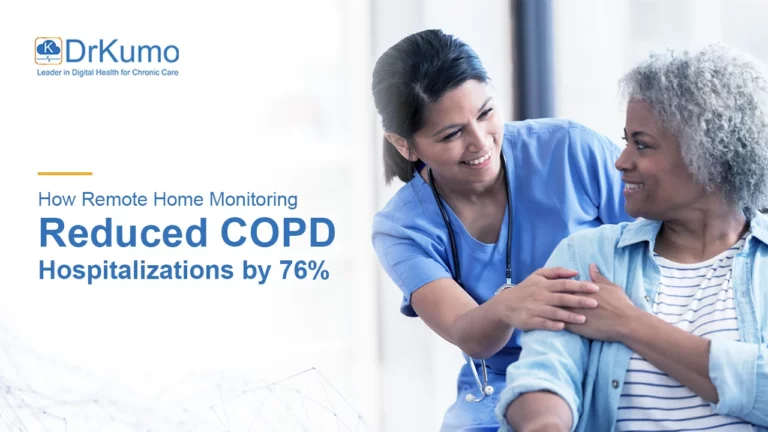The use of remote patient monitoring (RPM) and decentralized clinical trials (DCTs) has increased as the industry has begun to employ these solutions to address the COVID-19-induced clinical trial interruptions.
Patients’ access to trial locations was decreased by 80% as health-system resources were absorbed by COVID-19-related care and travel became constrained due to physical distance. From January 2020 to April 2020, the number of monthly trial starts fell by half, and 60% of investigators reported a significant decrease in trial activities in May 2020.[1] In the face of such disruption, sponsors acted quickly to ensure continuity of care and data integrity, for example, by implementing remote consent and patient monitoring, videoconference assessments, and at-home phlebotomy.
Decentralized trials can recruit participants across regions by leveraging digital technology, which has the impact of creating the trials widely available, a vital enrolling strategy for clinical trials targeting rare illness demographics. Decentralized clinical trials also allow trial participants to receive treatment in the comfort of their own homes or with little to no travel, and they frequently include some form of remote patient monitoring, which allows investigators to monitor study subjects’ status in real time and collect data directly from patients.
What is Decentralized Clinical Trial (DCT)?
DCTs, also known as “direct-to-participant trials” or “virtual” research, rely less on traditional research facilities or expert intermediaries to collect data. Telemedicine, sensory-based technologies, wearable medical devices, home visits, patient-driven virtual health care interfaces, and direct delivery of research medicines and materials to patients’ homes are all used in DCTs. Subject recruiting, delivery and administration of study medicine, and data collection for trial outcomes all take place in a completely decentralized clinical trial with no in-person contact between the study team and the patient/subject.[2]
Decentralized aspects are already common in drug approval trials, and DCTs frequently combine traditional design with decentralization of patient/subject interactions. In fact, the FDA defines decentralized clinical trials as those performed by means of telemedicine, using tech-enabled processes, which is different from traditional clinical trial model. Decentralized clinical trials are conducted remotely, with participating patients staying at home during some portions, or all, of the study.
As decentralization of clinical trials creates a significant impact on the field of clinical research, many sponsors, sites, pharmaceutical companies, clinical research organizations (CROs) and regulatory agencies are rapidly shifting gears to keep trials on track and meet or exceed drug development objectives while maintaining data integrity and the safety of patients, HCPs, and research teams.
What are the challenges or barriers to effective clinical trial decentralization and remote data collection?
Technological advancements are essential for DCTs, but they are also a major barrier to DCT study design acceptance. Many of the problems that come with site-specific studies can be solved using decentralized clinical trials. Clinical trial laws, on the other hand, have not kept up with the digital tools employed in decentralized trials. This necessitates the development of new procedures for the decentralized environment by investigators. They must figure out how to safely and in accordance with study protocols give investigational medication to patients. In the same way, using remote communications necessitates thinking about data protection, patient confidentiality, and mechanisms to verify patient identities.
Here are the top 5 challenges to effective DCTs:
- Finding RPM partners or new technology vendors that provide timely data streaming so as not to delay clinical trials, comply with the clinical trial protocols, and deliver safe virtual environment via strong cybersecurity framework
- Monitoring a high volume of patient data from computer or mobile-enabled applications and wireless / wearable medical devices
- Continuity of patient care outside the clinical environment with high patient engagement or participation
- Loss of patient data due to technology-related errors which may disrupt or delay trial progression
- Patient’s aversion to new technological process as some devices like wearables are complex to use, especially for the elderly and sick patients
What are top 3 features of Remote Patient Monitoring for Decentralization of Clinical Trials?
Decentralized clinical trials and remote monitoring solutions are a much-needed lifeline during this COVID-19 pandemic. RPM addresses concerns on challenges concerning the global health crisis by placing importance on the most crucial elements of decentralized clinical trials such as stakeholders’ open communication and continuous data streaming. Organizations should look to adaptable technology systems that offer a wide range of tools and capabilities to support the widest diversity of decentralized clinical trials. Here are the top 3 features of RPM for a successful DCT:
1. Real-time live data streaming of participant data
DCT should be participant-friendly. Traditionally, participants in clinical trials are required to visit the research facility whenever the investigators need to collect data. People may have to travel great distances or take time off work for sessions, and because the appointments are focused on data, clinical research professionals may not have time to provide one-on-one attention to participants.
Decentralized clinical trials enable participants to share their data without leaving their home or workplace by using wearable technologies, mobile apps, or telehealth visits. When participants must attend the research location in person, clinical research professionals can focus on providing specific advice and treatment rather than simply collecting data. This tailored care is crucial for patients with illnesses, who frequently enroll in clinical trials in order to spend more time with investigators and clinical trial staff. Remote Patient Monitoring, in conclusion, must be continuously tracking vital health data of participants anytime and anywhere with real-time data monitoring from researchers’ end in order to successfully deploy virtual researches like DCTs.
2. Generating large amount of data in safe and compliant virtual environment
In a decentralized trial, researchers can employ technology to collect data from participants when they are at home, work, or the vacation, rather than just when they attend the research location. Wearable gadgets are used in some decentralized studies, while others rely on smartphone apps or telehealth conversations.
All of these technologies have the ability to communicate data from beyond the controlled environment of the research center. This broadens the range of patient data from the trial and makes it more available to researchers. Investigators can receive data as frequently as they need it and observe how therapies influence patients in a variety of settings. Secure remote technology prevents data loss or incorrect reporting. A device, for example, may broadcast a patient’s heart rate or temperature straight to the study location, removing the patient’s concern about forgetting to record it or recording it wrong.
It is very important for research centers or firms to choose an RPM vendor which provides systems compliant to regulatory standards such as HIPAA and NIST cybersecurity framework, while having the ability to handling huge amount of participants’ data.
3. Promoting diversity of participants
Making it easy for people to participate in clinical trials can significantly improve trial diversity, ensuring that medications or treatment are successful for a wide range of patients. Although decentralized trials alone will not result in full inclusion of underrepresented patients, they can help reach patient populations that are frequently overlooked. According to the ACRP, 13.4% of the US population is Black, yet just 5% of trial participants are. Similarly, Hispanic/Latino people account for 18.1% of the population but only 1% of trial participants.[3]
This lack of diversity is caused by a number of factors, one of which is a lack of access. People who reside far away from these research facilities are typically unaware of or unable to access clinical trials, and that patients who live close may or may not be diverse. RPM should have the ability to broaden the pool of possible clinical trial participants, allowing more varied patients to participate. This is possible if RPM vendor provides easy-to-use devices, multi-lingual application, and support from its staff or representatives.
DrKumo Remote Patient Monitoring for Decentralized Clinical Trials
DrKumo Inc. is a Connected Health Technology leader that provides continuous real-time remote patient monitoring technology, offers dependable decentralized trial and data collection solutions to support sponsors, pharmaceutical companies, clinical research organizations (CROs) and other healthcare systems during the pandemic and beyond.
DrKumo provides secure real-time remote patient monitoring technology with AI-driven yet easy to use medical devices, enabling remote clinical trials possible without compromising data quality, mitigating some of the burden and cost of traditional methods, and eliminating missed clinical visits and patient follow ups.
Contact us to know more about how DrKumo can help your organization in deploying successful Decentralized Clinical Trials.
References:
- John Z. Xue et al., “Clinical trial recovery from COVID-19 disruption,” Nature Reviews Drug Discovery, September 2020, Volume 19, pp. 662–3, nature.com.
- Decentralized Clinical Trials: The Future Of Medical Product Development?∗. (2021, April 1). PubMed Central (PMC). https://www.ncbi.nlm.nih.gov/pmc/articles/PMC8093545/.
- Representation In Clinical Trials: A Review on Reaching Underrepresented Populations in Research – ACRP. (2020, August 10). ACRP. https://acrpnet.org/2020/08/10/representation-in-clinical-trials-a-review-on-reaching-underrepresented-populations-in-research/.








